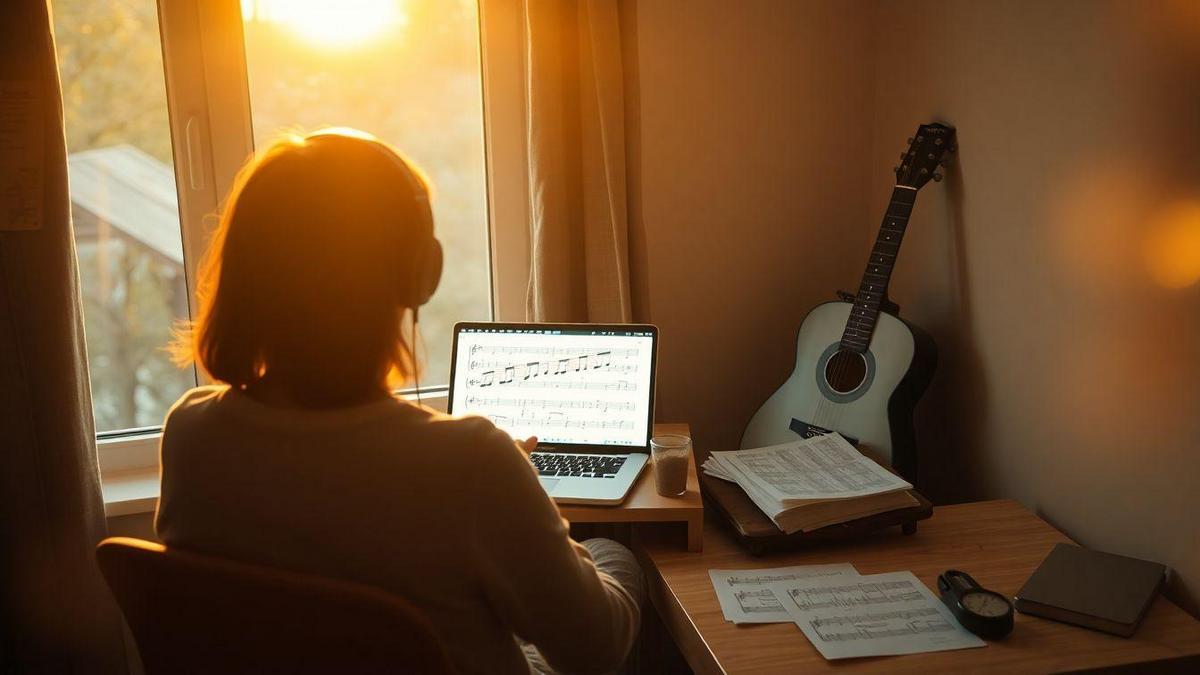Can you learn music on your own—or do you need a teacher?
I asked myself: “Can you learn music on your own—or do you need a teacher?” The short answer: yes—you can learn a lot on your own. A teacher speeds progress and fixes technical problems, but with clear goals, short daily practice, good resources, and occasional outside feedback, self-directed learning works very well.
Key takeaway
- You can make steady progress with short daily practice.
- Use simple online lessons, books, and apps to guide you.
- Break songs into small parts and track progress.
- Record yourself and ask for focused feedback when needed.
- Celebrate tiny wins to stay motivated.
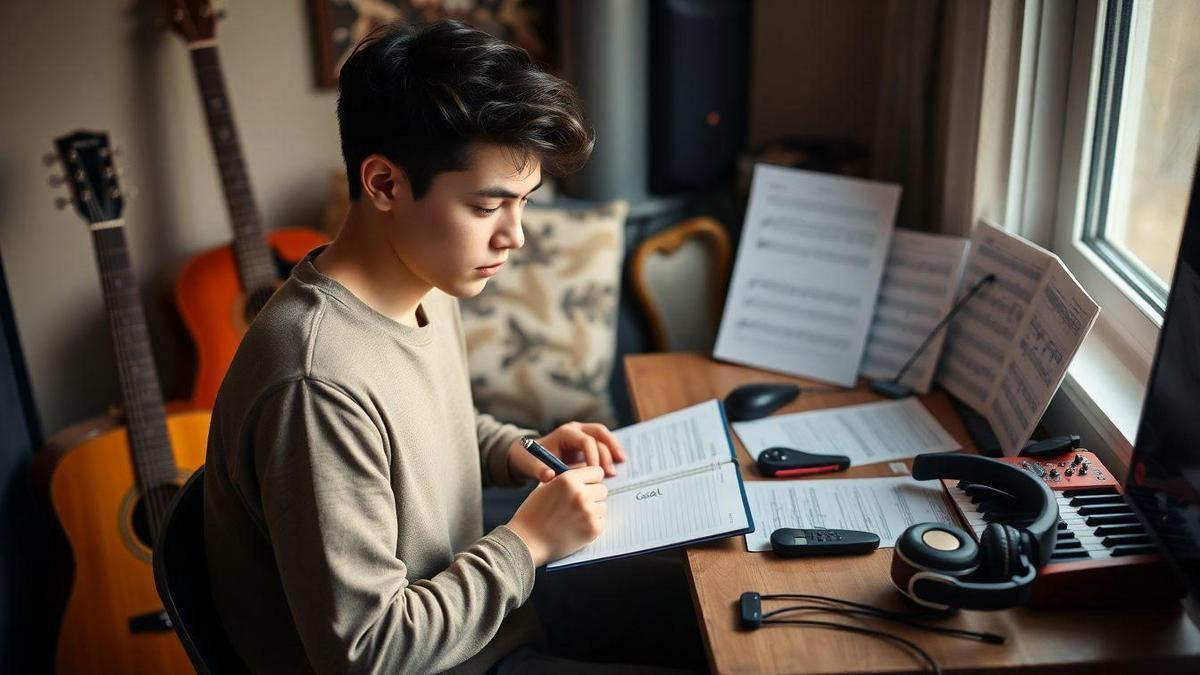
How I set clear goals to learn music by myself
I stopped aiming vaguely to get better and set specific, achievable targets—small steps that stack into big gains.
- Make goals specific: Learn three open guitar chords or Read one page of a beginner piano book.
- Give each goal a simple deadline, not to pressure yourself but to focus practice.
- Tie goals to songs you love so practice stays fun.
I choose small goals I can reach
Small, measurable goals prevent overwhelm and build momentum.
- Pick one skill at a time: rhythm, chords, or scales.
- Limit sessions: see why twenty minutes daily often beats long, infrequent marathons and check recommended daily time guidelines.
- Examples: learn three basic guitar chords in two weeks; play a simple melody from start to finish in a month.
I track progress with simple tools
Tracking turns practice into visible progress.
- Keep a practice log: date, duration, focus, and one sentence about progress.
- Record short clips weekly to hear real growth.
- Use checklists and a weekly focus to avoid scatter, and use strategies from how to stop procrastinating on music practice to stay consistent.
- When things go wrong, follow tips from turning mistakes into learning opportunities.
I celebrate tiny wins
Small rewards keep motivation high.
- Do a quick celebration (happy dance, coffee, share a clip).
- Mark bigger wins on a calendar with a sticker or note.
- Share progress with friends or online groups for encouragement—ideas for staying energized are in staying motivated when progress feels slow.
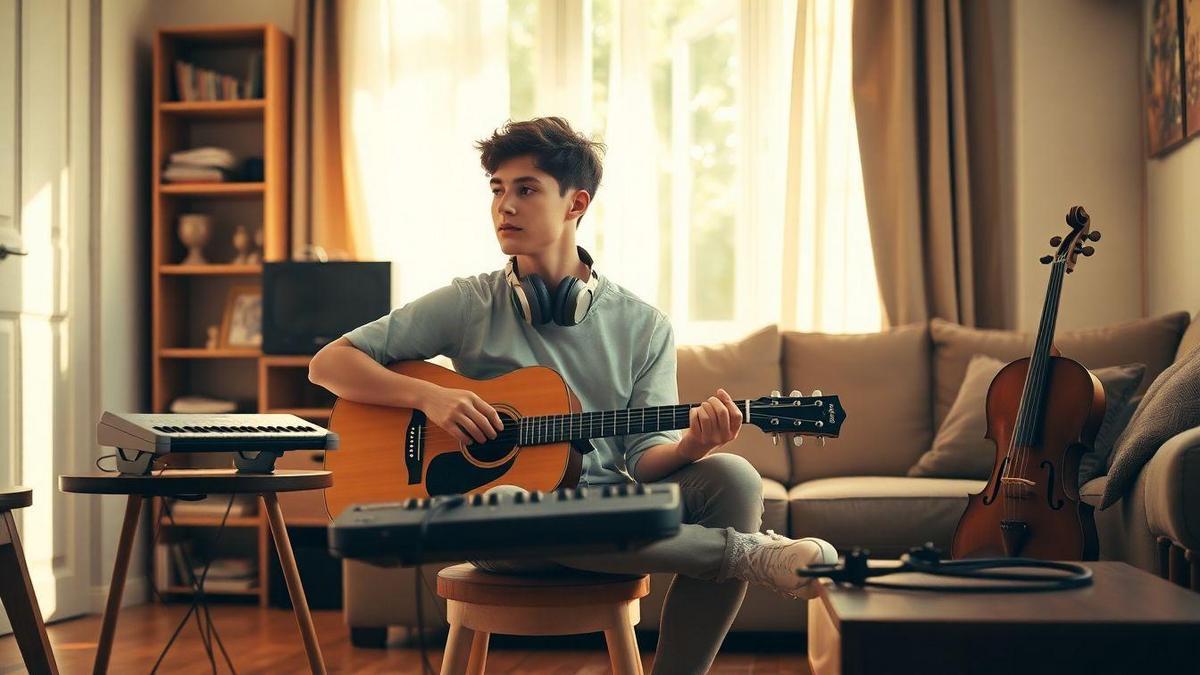
How I pick an instrument when teaching myself
Choose comfort and quick rewards.
- Interest: pick an instrument that excites you—read a guide on how to choose your first instrument without regrets.
- Comfort: it must feel good physically.
- Budget and portability: set a max price and consider travel options; compare options in affordable instruments for beginners and whether to rent or buy in renting vs buying your first instrument.
- Learning curve: pick something with quick wins—see the truth about easy instruments and options like guitar, keyboard, or drums.
Try before you buy, check size/cost/sound, and choose an instrument where two of these three are good.
Basics: posture and hand shape
Good habits now prevent pain later.
- Keep a neutral spine and relaxed shoulders.
- Hold hands gently but firmly; use a mirror or video to check form.
- Warm up and stretch wrists/shoulders for 5–15 minutes before/after practice. See musicians’ health and injury prevention guidance for ergonomics and warm-up routines recommended by specialists.
- Avoid common early pitfalls by reviewing the list of seven beginner mistakes that slow music progress.
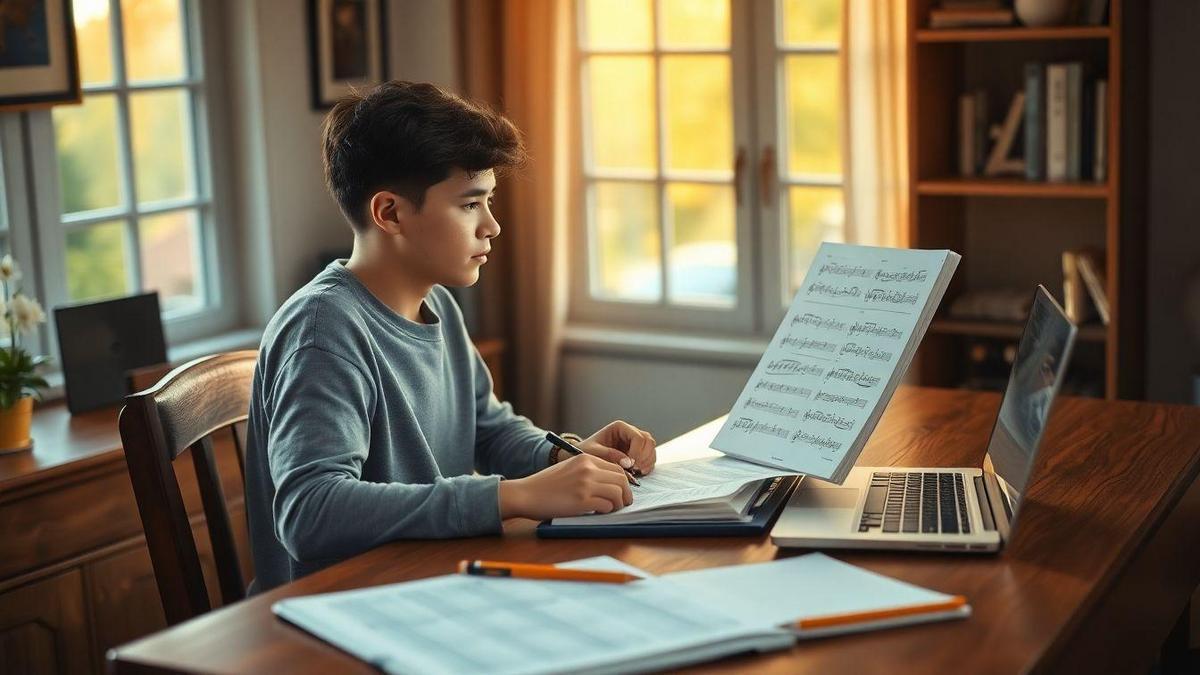
How I learn music theory on my own
You can learn theory step by step—treat it like reading a map before you drive.
- Make self-study a daily habit, not a marathon.
- Mix listening, writing, and playing so theory becomes practical. Use step-by-step music theory lessons and exercises to practice chords, scales, and intervals interactively.
Focus first on chords, scales, and rhythm:
- Chords: study what chords are and why they matter and apply simple progressions (I–IV–V).
- Scales: start with the basics in scales explained in plain English.
- Rhythm: clap patterns, count out loud, use a metronome—learn how to use a metronome without losing patience.
If theory feels intimidating, see is music theory really that scary? for a plain-language approach. For intervals, check musical intervals made simple, and for harmony basics read a beginner’s guide to harmony. Use one beginner book for structure and free videos for demos. Practice one short theory lesson (10–20 minutes) daily: warm up, work the concept, then apply it to a song or improv.
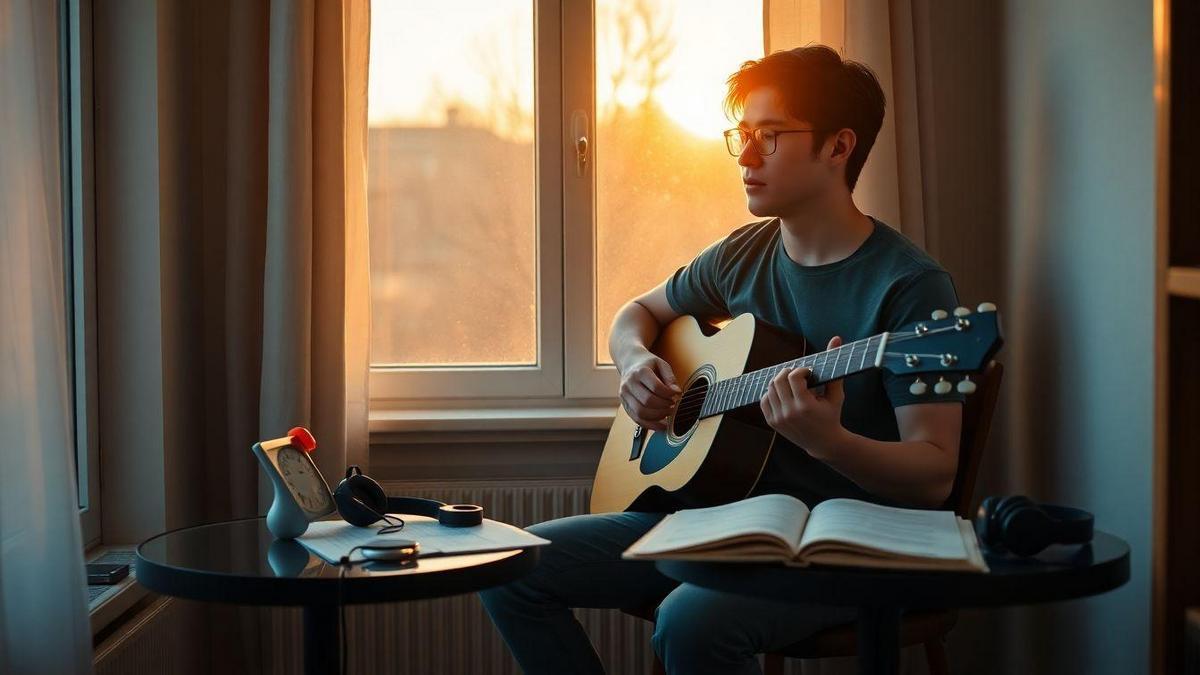
How I build a practice routine
I treat practice like watering a plant—small and regular.
- Set a fixed short daily time (10–25 minutes) and attach it to an existing habit—see how to create a simple practice routine and the benefits in the power of just twenty minutes daily. Also consult evidence-based tips for daily practice.
- Break sessions into warm-ups, target drills, and songs (60–70% drills, 30–40% songs).
- Use a timer and write a one-line log after each session to keep focus and momentum.
- Build a pre-practice ritual from rituals that help you enter practice mode and make it enjoyable with ideas from making practice fun instead of a chore.
Using lessons and apps to learn by yourself
Apps and videos are powerful when chosen carefully.
- Pick step-by-step lessons with slow, close-up videos.
- Use apps for tuning, metronome, and feedback (slow-down, pitch/timing visuals).
- Combine app practice with real instrument time: warm-up with metronome, follow lesson videos, record short clips, correct one small issue, then play for fun.
- If you rely on the metronome, read tips on how to use it without losing patience.
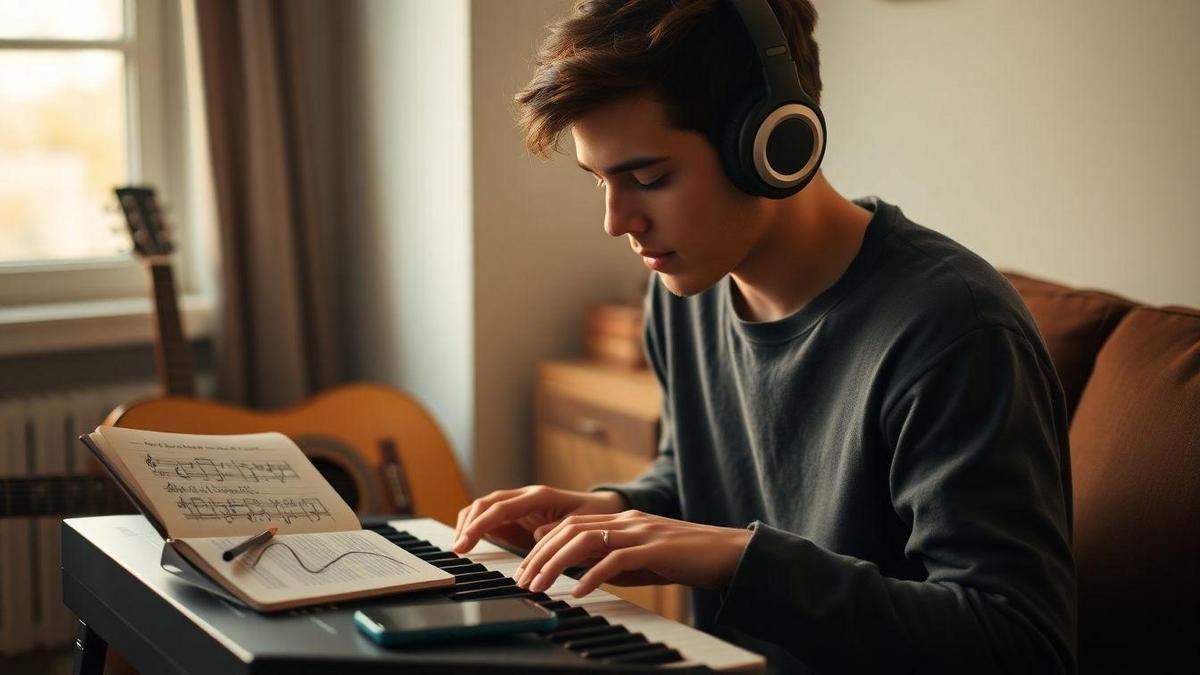
How I train my ear as a self-taught musician
Daily ear work speeds everything up.
- Sing back short phrases to build pitch memory.
- Do interval and chord identification drills (start with unison, octave, perfect fifth; add thirds and sevenths) — helpful exercises are in musical intervals made simple.
- Use playlists to study styles and rhythms: listen for melody, rhythm, then chord changes. Review scale sounds in scales explained in plain English to link ear training with what you play.
How I teach myself to read music and count rhythm
Start slow and keep it practical.
- Learn note names and staff positions with mnemonics and flashcards.
- Clap rhythms while counting out loud with a metronome.
- Mark beats on the score and play one measure at a time. Record and listen back to catch rushing or lagging.
- For chord charts and notation, see how to read chords and sheet music.
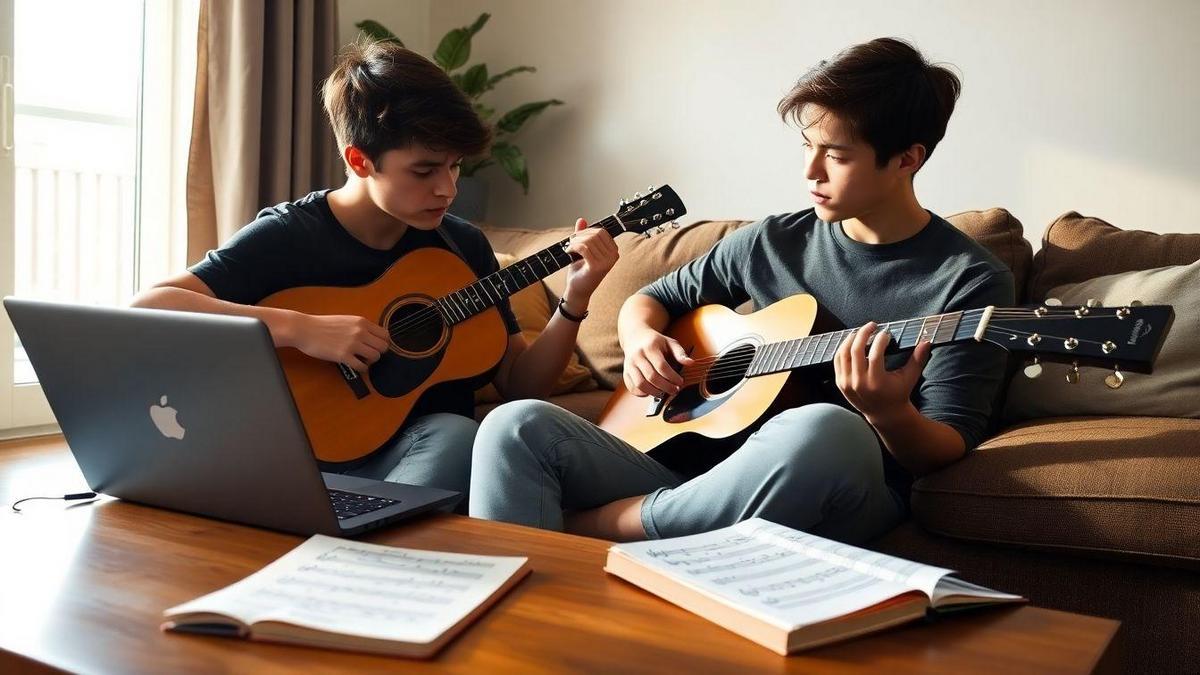
Can you learn music on your own—or do you need a teacher? How I judge when I need help
Yes, you can learn on your own, but get a teacher when progress stalls or bad habits form.
- Keep tracking: if practice yields steady improvements, continue self-study.
- Red flags: persistent pain, stuck technique, or plateaued timing.
- Use short lessons for focused fixes—send a clip beforehand, ask for one or two drills, and request 10–15 minute daily homework.
When to go it alone vs. take lessons:
- I can spot/fix mistakes with recordings → practice solo with videos and focused drills.
- I have posture pain or recurring technical issues → book a short lesson and target the problem area.
- I need quick progress for a gig or exam → take focused lessons and consider the role of coaching in talent vs. practice.
- I want broad repertoire growth → mix self-study and occasional feedback.
Playing with others and performing
Group playing accelerates feel, timing, and confidence. For ensemble tips, consult practical resources for ensemble playing and performance.
- Join jams, bands, or choirs—arrive early, listen, play a simple part, and ask for one bit of feedback.
- Record and share short clips to get outside ears and practical tips.
- Set low-stress goals like one short song per month: split it into parts, practice each, record and share.
- If you’re deciding whether to pursue music further, the piece on should music be your hobby or career can help frame your goals, and improvisation made simple is useful for playing with others.
Conclusion
Can you learn music on your own—or do you need a teacher? Yes—you can. I reached where I am by setting clear goals, practicing a little every day, using targeted apps and lessons, training my ear, and celebrating small wins. A teacher is a helpful shortcut when you hit specific roadblocks, but it’s not the only path. Treat learning like tending a garden: consistent, small care grows something real.
If you want more how-tos and practice ideas, visit https://clickneutro.com for more guides and resources.
Frequently asked questions
Can you learn music on your own—or do you need a teacher?
Yes. You can learn a lot on your own. A teacher speeds progress and catches bad habits faster, but with clear goals, consistent practice, and good resources you’ll make real progress independently.
How do I start learning music alone?
Pick an instrument (see how to choose your first instrument), choose one simple song, learn basic notes/rhythm/posture, use a beginner book plus short videos, practice 10–20 minutes daily (or follow the simple routine), and record yourself to track progress.
Can I become a pro without a teacher?
You can become highly skilled on your own, but reaching professional level usually requires honest outside critique, mentors, regular performance situations, and focused coaching to refine advanced technique and musicality. Read more about talent vs. practice and think about whether music should be a hobby or career in should music be your hobby or career.
